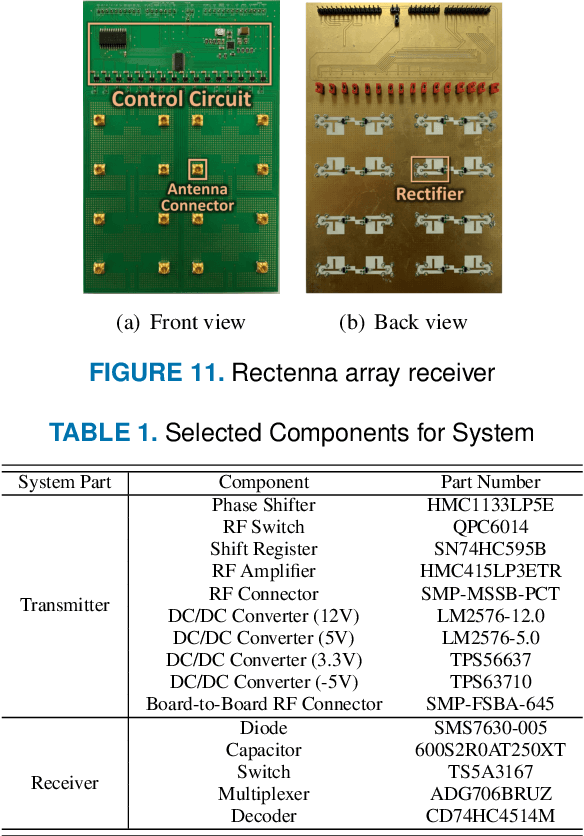Je Hyeon Park
Design and Implementation of 5.8GHz RF Wireless PowerTransfer System
Oct 06, 2021



Abstract:In this paper, we present a 5.8 GHz radio-frequency (RF) wireless power transfer (WPT) system that consists of 64 transmit antennas and 16 receive antennas. Unlike the inductive or resonant coupling-based near-field WPT, RF WPT has a great advantage in powering low-power internet of things (IoT) devices with its capability of long-range wireless power transfer. We also propose a beam scanning algorithm that can effectively transfer the power no matter whether the receiver is located in the radiative near-field zone or far-field zone. The proposed beam scanning algorithm is verified with a real-life WPT testbed implemented by ourselves. By experiments, we confirm that the implemented 5.8 GHz RF WPT system is able to transfer 3.67 mW at a distance of 25 meters with the proposed beam scanning algorithm. Moreover, the results show that the proposed algorithm can effectively cover radiative near-field region differently from the conventional scanning schemes which are designed under the assumption of the far-field WPT.
Reconfigurable Intelligent Surface-Aided Wireless Power Transfer Systems: Analysis and Implementation
Jun 12, 2021



Abstract:Reconfigurable intelligent surface (RIS) is a promising technology for RF wireless power transfer (WPT) as it is capable of beamforming and beam focusing without using active and power-hungry components. In this paper, we propose a multi-tile RIS beam scanning (MTBS) algorithm for powering up internet-of-things (IoT) devices. Considering the hardware limitations of the IoT devices, the proposed algorithm requires only power information to enable the beam focusing capability of the RIS. Specifically, we first divide the RIS into smaller RIS tiles. Then, all RIS tiles and the phased array transmitter are iteratively scanned and optimized to maximize the receive power. We elaborately analyze the proposed algorithm and build a simulator to verify it. Furthermore, we have built a real-life testbed of RIS-aided WPT systems to validate the algorithm. The experimental results show that the proposed MTBS algorithm can properly control the transmission phase of the transmitter and the reflection phase of the RIS to focus the power at the receiver. Consequently, after executing the algorithm, about 20 dB improvement of the receive power is achieved compared to the case that all unit cells of the RIS are in OFF state. By experiments, we confirm that the RIS with the MTBS algorithm can greatly enhance the power transfer efficiency.
 Add to Chrome
Add to Chrome Add to Firefox
Add to Firefox Add to Edge
Add to Edge